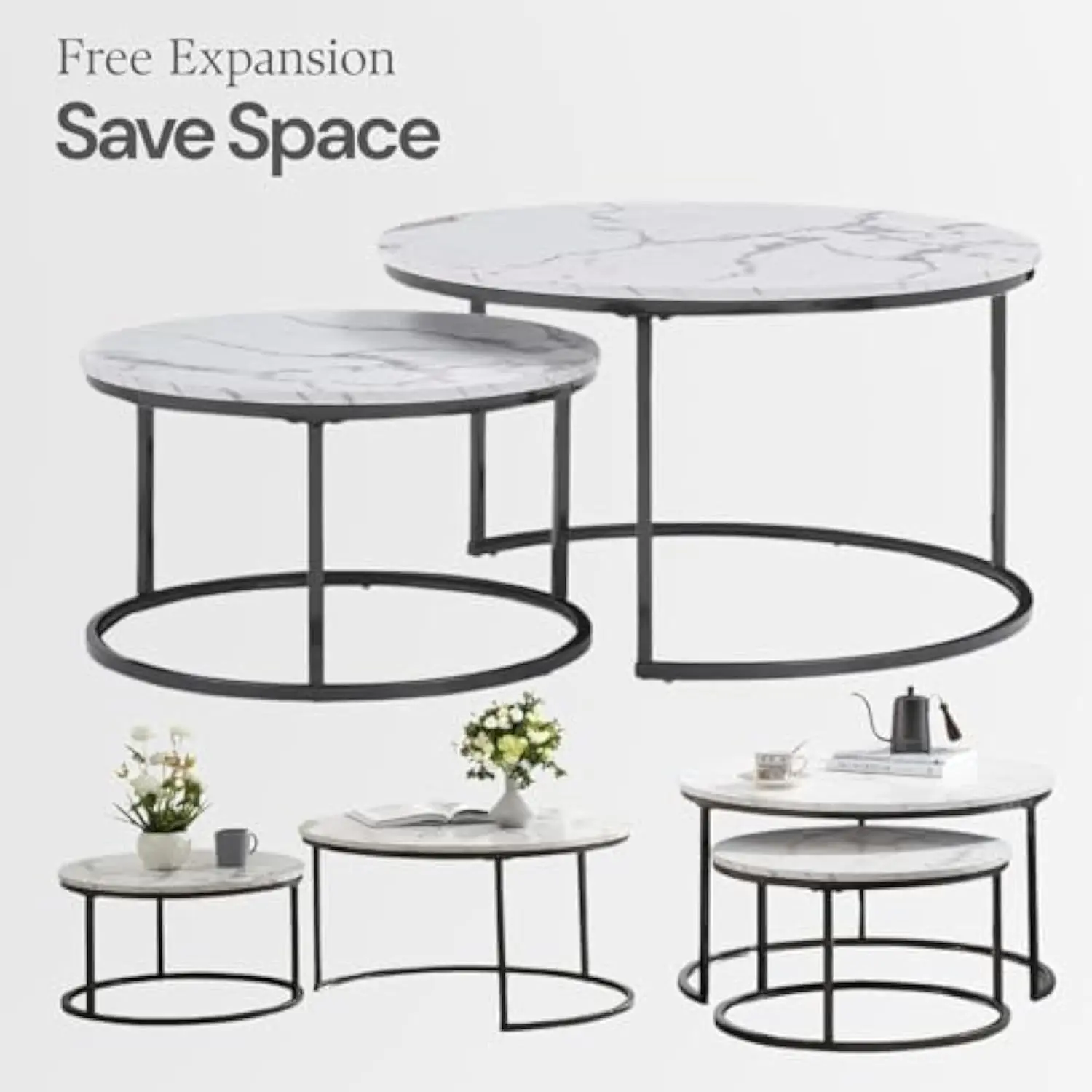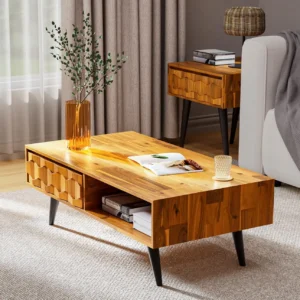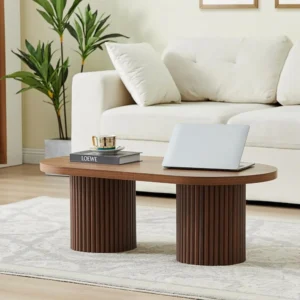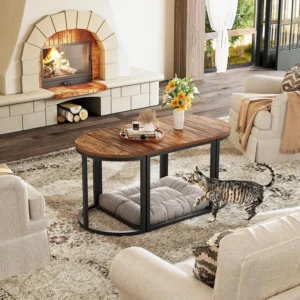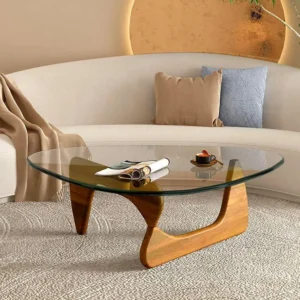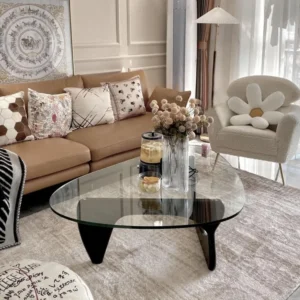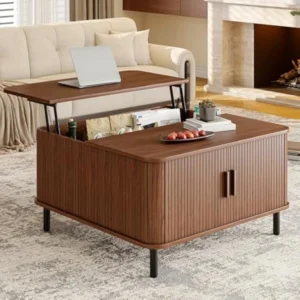Discovering the History and Style of Vintage Tables
Vintage tables are more than just pieces of furniture—they’re storytellers that capture moments in design history. Each scratch, curve, and joint tells a tale of the era that created it, reflecting the cultural values, technological capabilities, and aesthetic sensibilities of its time. For collectors, decorators, and enthusiasts alike, the ability to identify these design eras transforms an ordinary table hunt into a historical treasure quest.
Understanding the distinctive characteristics of different periods matters for several reasons. It helps authenticate genuine pieces, accurately determine their value, and place them appropriately within interior design schemes. Moreover, this knowledge deepens our appreciation for the craftsmanship that went into creating these enduring pieces.
Throughout history, tables have evolved dramatically—from the ornate, hand-carved masterpieces of the 18th century to the sleek, machine-formed designs of mid-century modernism. These transitions reflect broader societal shifts: industrialization, changing social customs, new materials, and evolving artistic movements.
In this guide, we’ll explore the key identifying elements of table design across various historical periods, providing you with the tools to recognize authentic pieces from each era. At Hearth Forms, our dedication to intelligent black mid-century coffee tables stems from our deep appreciation for the distinctive design elements that make vintage tables special.
The ability to trace a table’s lineage through its construction techniques and stylistic elements transforms how you’ll view furniture forever. Beyond mere identification, understanding materials in vintage tables creates a deeper connection with the pieces that furnish our homes.
Essential Elements for Identifying Vintage Table Design Eras
To accurately identify the era of a vintage table, you need to examine several key elements that together create a distinctive design signature. These elements evolved across different periods, making them valuable clues for authentication and appreciation.
Materials
The choice of materials often provides the first major clue to a table’s era:
- Woods: Each period favored specific woods—mahogany dominated Georgian designs, oak defined Arts and Crafts pieces, while teak and walnut became signatures of mid-century modern.
- Metals: From ornate brass and ormolu in 18th-century designs to streamlined chrome and aluminum in 20th-century pieces.
- Glass and Stone: How and where these materials were incorporated changed dramatically across eras.
- Finishes: The evolution from hand-rubbed shellac to nitrocellulose lacquers to polyurethane reveals much about a piece’s age.
Construction Techniques
How a table was built tells us when it was made:
- Joinery Methods: Hand-cut dovetails in earlier periods evolved to machine-cut joints in later years.
- Hardware: The evolution of screws, nails, and fasteners provides definitive dating clues.
- Assembly Marks: Hand vs. machine manufacturing leaves distinctive signatures.
Form & Silhouette
The overall shape and proportion of tables transformed dramatically across design periods:
- Table Leg Styles: From cabriole legs (Queen Anne) to straight tapered legs (Mid-Century) to pedestal bases (Art Deco).
- Table Edges: Profiles evolved from ornate carved edges to sleek waterfall edges.
- Proportions: Height-to-width ratios and scale shifted with changing functions and aesthetics.
Ornamentation & Decorative Details
The level and style of decoration often defines a design era:
- Carving Techniques: From ornate rococo carvings to the restrained details of Shaker design.
- Inlay and Veneer Patterns: Marquetry, parquetry, and veneer applications changed dramatically.
- Hardware Design: Drawer pulls, table mechanisms, and decorative elements reflect period aesthetics.
Maker’s Marks and Labels
When present, these provide definitive provenance:
- Stamped Marks: Often found underneath or on the back of pieces.
- Paper Labels: Common on 19th and 20th-century factory-made pieces.
- Inscriptions: Sometimes penciled or stamped inside drawers or underneath.
Our vintage coffee tables collection demonstrates how these identifying elements come together in authentic pieces that represent their design eras faithfully.
These observation categories form the foundation for accurate vintage table identification. As we explore specific design periods, we’ll reference these elements to help you develop a trained eye for distinguishing authentic pieces.
The 18th Century: Elegance and Refinement in Table Design
The 18th century marked a golden age in furniture design, with tables becoming increasingly specialized and refined. This era saw furniture transition from purely functional objects to statements of taste and social status.
Queen Anne (1720-1760)
The Queen Anne period introduced a more graceful, curved aesthetic that departed from earlier, heavier styles:
- Distinguishing Features: Elegant cabriole legs ending in pad feet or simple scroll feet; minimal surface ornamentation; emphasis on beautiful wood grain rather than elaborate decoration.
- Materials: Primarily walnut, with later pieces in cherry and maple; brass hardware with simple designs.
- Common Forms: Tea tables with tilting tops, drop-leaf dining tables, and lowboys (dressing tables) with cabriole legs.
- Ornamentation: Restrained shell motifs, gentle curves, and subtle proportions replaced earlier elaborate carving.
Georgian/Chippendale (1750-1780)
This period saw more ornate interpretations of the Queen Anne style, with increased decoration:
- Distinguishing Features: More robust proportions; more elaborate cabriole legs often ending in ball-and-claw feet; distinctive pie-crust edges on tea tables.
- Materials: Primarily mahogany, which allowed for more intricate carving than walnut.
- Table Types: Tilt-top tea tables, card tables with folding tops, tripod tables, and dining tables with drop leaves.
- Ornamentation: Increased carving including acanthus leaves, C-scrolls, and Chinese-inspired fretwork.
Neoclassical (1770-1820)
The Neoclassical period, including Hepplewhite and Sheraton styles, marked a return to classical influences:
- Distinguishing Features: Straight, tapered legs often with spade feet; lighter, more delicate appearance; shield-back chairs and more rectilinear forms.
- Materials: Mahogany and satinwood with contrasting inlays in lighter woods.
- Table Forms: Pembroke tables (drop-leaf side tables), sofa tables (narrow rectangular tables), and work tables with storage.
- Ornamentation: Decorative inlays including bellflowers, fans, and urns; painted details; contrasting stringing and banding.
The evolution from Queen Anne to Georgian to Neoclassical reflects broader cultural shifts toward greater refinement and changing social customs around dining and entertainment. Understanding the differences between antique and vintage tables helps collectors properly categorize these 18th-century pieces, which fall firmly in the antique category.
The 19th Century: Victorian Opulence to Arts and Crafts Simplicity
The 19th century saw dramatic shifts in table design, moving from the classical-inspired early styles through Victorian excess to the revolutionary simplicity of the Arts and Crafts movement.
Regency/Empire (1800-1840)
Influenced by Napoleonic France and ancient civilizations:
- Distinguishing Features: Bold, heavy forms; pedestal bases with tripod feet; animal motifs including paw feet and lion heads.
- Materials: Mahogany, rosewood, and ebonized woods often accented with gilded bronze mounts.
- Common Tables: Center tables, pier tables positioned between windows, library tables, and sofa tables.
- Ornamentation: Classical motifs including lyres, urns, laurel wreaths, and Egyptian-inspired elements.
Victorian Era (1837-1901)
This lengthy period saw multiple revival styles and unprecedented decoration:
- Distinguishing Features: Heavy proportions; substantial carving; dark finishes; and an emphasis on displaying wealth through ornate detail.
- Revival Styles: Gothic Revival (pointed arches, quatrefoils); Rococo Revival (asymmetrical scrollwork, naturalistic carving); Renaissance Revival (architectural elements, imposing scale).
- Materials: Primarily walnut and rosewood with increasing use of machine production.
- Table Forms: Parlor tables, center tables with marble tops, expanding dining tables with mechanical systems, and étagères (tiered display tables).
Arts and Crafts Movement (1880-1920)
A reaction against Victorian excess and industrial production:
- Distinguishing Features: Honest, straightforward construction; exposed joinery; simple forms emphasizing function; minimal decoration.
- Materials: Primarily quarter-sawn oak with visible grain; hammered copper or iron hardware.
- Table Types: Library tables, dining tables with straight legs, side tables with visible tenons.
- Ornamentation: When present, derived from nature or geometric forms; emphasis on displaying construction rather than hiding it.
Art Nouveau (1890-1910)
Characterized by organic, flowing lines and nature-inspired forms:
- Distinguishing Features: Asymmetrical designs; whiplash curves; integration of natural motifs like flowers, vines, and insects.
- Materials: Exotic woods, inlays, colored glass, and custom metalwork.
- Table Forms: Small occasional tables, tea tables, and decorative side tables.
- Ornamentation: Carved or inlaid floral motifs, sinuous lines, and stylized natural forms.
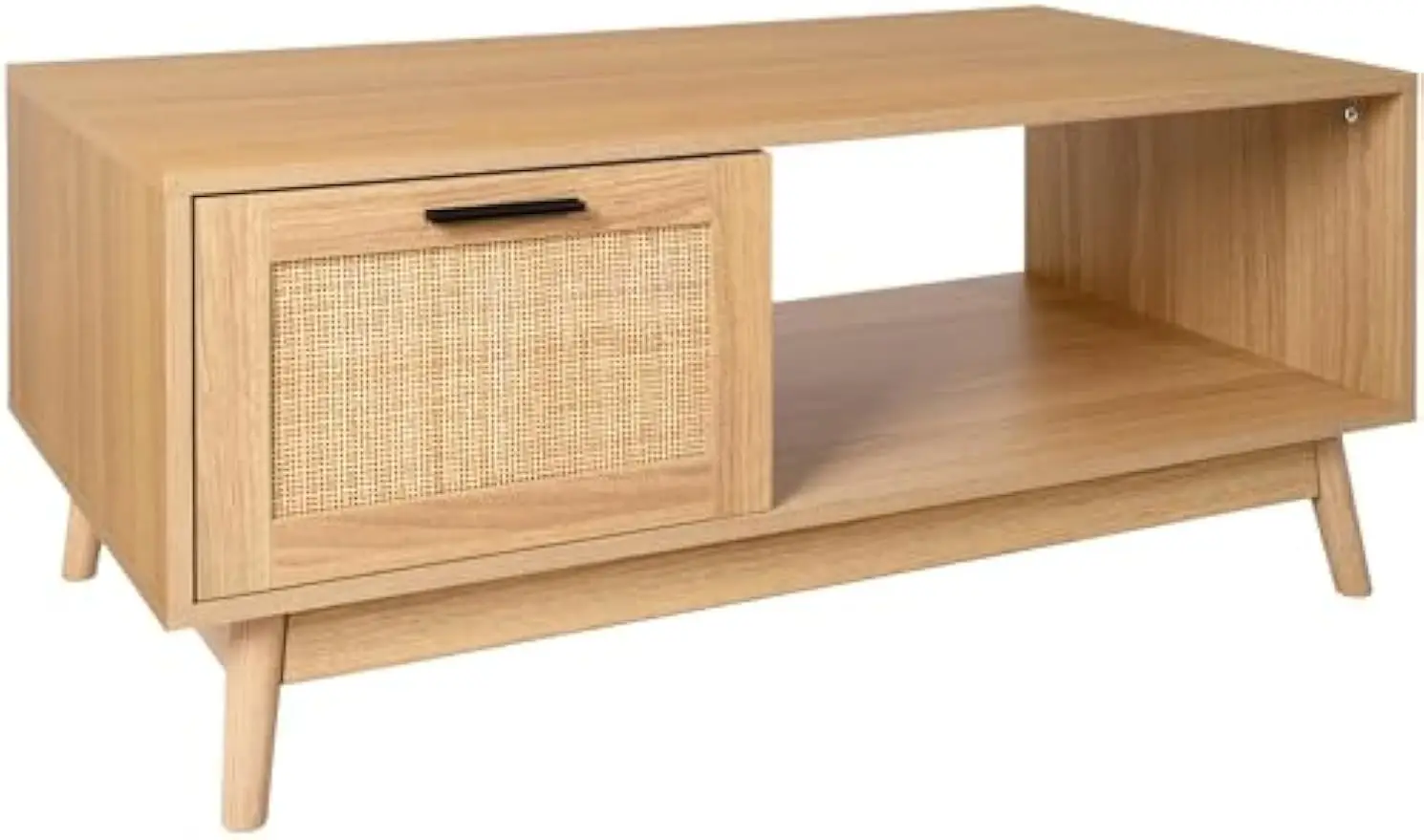
This century witnessed design movements reacting to one another—Victorian opulence giving way to Arts and Crafts simplicity—demonstrating how quality craftsmanship in vintage furniture evolved through different philosophical approaches to design and manufacturing.
Mid-Century Modern: The Golden Age of Table Design
The Mid-Century Modern (MCM) period, roughly spanning from 1945 to 1969, represents one of the most influential and enduring design movements in furniture history. Emerging from post-war optimism, technological advancement, and changing lifestyles, MCM tables embody a perfect balance of form and function.
Historical Context
Mid-Century Modern design emerged as a response to several factors:
– Post-war optimism and the need for practical, affordable furniture
– Influence of the Bauhaus movement and Scandinavian design principles
– Development of new manufacturing techniques and materials
– Changing domestic lifestyles requiring multi-functional, versatile pieces
Defining Characteristics of MCM Tables
- Clean Lines and Organic Forms: Emphasis on simple, uncluttered silhouettes with both geometric and biomorphic (naturally-shaped) forms
- Tapered Legs: The quintessential splayed or angled legs, often finished with metal caps or brass ferrules
- Minimal Ornamentation: Decoration comes from the beauty of materials rather than applied ornament
- Multi-functionality: Tables designed to serve multiple purposes in smaller post-war homes
- Material Celebration: Honest use of materials, showcasing natural grain and texture
Materials That Define MCM Tables
- Primary Woods: Teak, walnut, and rosewood dominate authentic pieces
- Secondary Elements: Glass tops, metal accents, and the introduction of plastic and laminate surfaces
- Finishes: Oil finishes that enhance natural grain rather than heavy lacquers that obscure it
Iconic MCM Table Types
- Coffee Tables: Often the centerpiece of MCM design with kidney-shaped, surfboard, or geometric forms
- Dining Tables: Frequently featuring innovative extension mechanisms and tapered legs
- Nesting Tables: Sets of graduated tables that stack together, exemplifying the space-saving ingenuity of the era
- Side Tables: Simple forms elevated through exceptional proportions and material quality
At Hearth Forms, our deep appreciation for Mid-Century Modern design is reflected in our carefully curated mid-century modern coffee tables that honor the authentic design principles of this pivotal era.
The enduring appeal of MCM tables lies in their seamless blend of beauty and utility. Their clean lines and timeless forms continue to influence contemporary furniture design, making authentic pieces highly sought after by collectors and design enthusiasts. For those seeking specific varieties, our black mid-century modern coffee table styles showcase how this versatile design approach works in various interior settings.
Scandinavian Modern: Simplicity, Function and Natural Beauty
While overlapping with the broader Mid-Century Modern movement, Scandinavian design developed its own distinctive character, emphasizing craftsmanship, natural materials, and democratic design principles. This approach created tables of exceptional quality that were meant to be both beautiful and accessible.
Key Characteristics of Scandinavian Tables
- Light Woods and Warm Tones: Unlike American MCM’s preference for darker woods, Scandinavian pieces favor light to medium-toned woods like teak, oak, birch, and pine
- Harmonious Proportions: Perfect balance between elements with nothing superfluous
- Softened Modernism: Clean lines with gentle organic curves and rounded edges
- Craftsmanship Focus: Traditional joinery and woodworking techniques merged with modern forms
- Functional Innovation: Clever storage solutions and multi-purpose designs
Materials and Construction
Scandinavian table design is characterized by:
– Premium solid woods with careful attention to grain pattern and color
– Minimal use of veneers compared to American counterparts
– Mortise and tenon joinery and other traditional woodworking methods
– Oiled rather than heavily lacquered finishes to maintain tactile wood feel
– Sparing but meaningful use of contrasting materials
Common Scandinavian Table Forms
- Dining Tables: Often extendable with ingenious leaf-storage mechanisms
- Coffee Tables: Low-profile rectangular or organic shapes, frequently incorporating storage
- Side Tables: Simple forms elevated by perfect proportions and material quality
- Nesting Tables: Sets of stackable tables showcasing efficiency and clean design
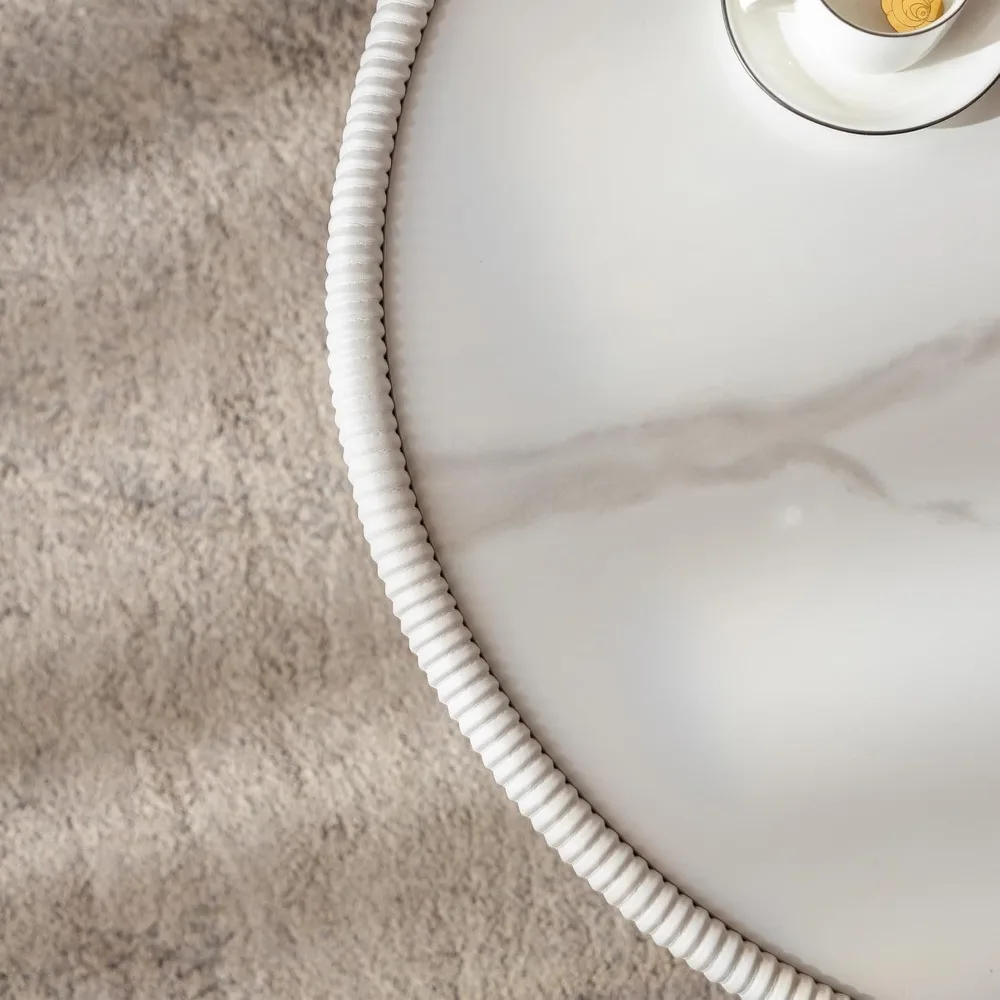
Scandinavian table design embodies the principle of “beautiful things that make your life better.” This philosophy aligns perfectly with Hearth Forms’ commitment to offering mid-century modern teak coffee tables that bring both functionality and natural beauty into modern living spaces.
The Scandinavian approach to furniture design continues to resonate with contemporary consumers because it successfully balances aesthetic beauty with practical function. These pieces feel simultaneously modern and timeless, making them versatile additions to many different interior styles.
Mid-Century Modern Solid Wood Coffee Tables, Mid-Century Modern Teak Coffee Tables
$879.95 Select options This product has multiple variants. The options may be chosen on the product pageMid-Century Modern Danish Coffee Tables, Mid-Century Modern Oval Coffee Tables, Mid-Century Modern Solid Wood Coffee Tables
$390.05 Select options This product has multiple variants. The options may be chosen on the product pageMid-Century Modern Coffee & End Table Sets, Mid-Century Modern Coffee Table Sets, Mid-Century Modern Oval Coffee Tables
Price range: $257.48 through $331.04 Select options This product has multiple variants. The options may be chosen on the product pageMid-Century Modern Glass Top Coffee Tables, Mid-Century Modern Glass Top Side & End Tables
$460.58 Select options This product has multiple variants. The options may be chosen on the product pageMid-Century Modern Glass Top Coffee Tables, Mid-Century Modern Vintage Coffee Tables, Mid-Century Modern Vintage Side & End Tables
$725.36 Select options This product has multiple variants. The options may be chosen on the product pageMid-Century Modern Lift Top Coffee Tables, Mid-Century Modern Square Coffee Tables
$454.73 Select options This product has multiple variants. The options may be chosen on the product page
Art Deco: Glamour and Geometric Precision in Table Design
Art Deco (1920-1940) emerged as a bold reaction to the flowing organic forms of Art Nouveau, embracing machine-age modernism while celebrating luxury and exuberance. This distinctive style transformed table design with its emphasis on geometric precision, exotic materials, and sophisticated glamour.
Historical Context
Art Deco developed during the prosperous years between World War I and the Great Depression, reflecting:
– Jazz Age optimism and exuberance
– Fascination with speed, machinery, and modern technology
– Influence of international styles including ancient Egyptian, African, and Aztec art
– The rise of Hollywood and its association with glamour and luxury
Defining Materials and Finishes
Art Deco tables showcase distinctive materials that define the era:
– Exotic Woods: Macassar ebony, zebrawood, and birds-eye maple
– Luxurious Surfaces: High-gloss lacquer finishes, often in black, cream, or bold colors
– Contrasting Elements: Chrome, polished brass, mirrored surfaces, and glass
– Innovative Materials: Early plastics like Bakelite, shagreen (sharkskin), and parchment
Characteristic Forms and Details
Art Deco tables can be identified through these signature elements:
– Geometric Forms: Strong horizontal lines with stepped or ziggurat profiles
– Symmetrical Designs: Balanced compositions with bold visual impact
– Waterfall Edges: Curved edges that appear to cascade like flowing water
– Streamlined Silhouettes: Aerodynamic forms suggesting speed and modernity
– Contrasting Veneers: Dramatic wood grains arranged in symmetrical patterns
Decorative Motifs
Look for these distinctive Art Deco decorative elements:
– Sunburst and fan patterns
– Chevron and zigzag motifs
– Stylized natural forms (gazelles, greyhounds)
– Geometric abstractions of fountains and skyscrapers
Our glass-top coffee tables collection includes pieces that showcase how Art Deco’s innovative use of materials continues to influence modern furniture design.
Art Deco represents an important transitional period between traditional and modern furniture design. Its emphasis on luxury materials and precise geometry created tables that served as functional art pieces, making a dramatic statement in any interior.
Distinguishing Between Similar Style Eras: Comparative Features
Even experienced collectors can find it challenging to differentiate between similar design periods. This comparative guide highlights the key differences between commonly confused styles.
Queen Anne vs. Chippendale
- Leg Style: Queen Anne features simpler cabriole legs with pad feet; Chippendale has more robust cabriole legs often with ball-and-claw feet
- Ornamentation: Queen Anne shows restraint with minimal carving; Chippendale embraces more elaborate decoration
- Woods: Queen Anne primarily uses walnut; Chippendale favors mahogany
- Table Edges: Queen Anne has simpler edges; Chippendale introduced pie-crust edges on tea tables
Hepplewhite vs. Sheraton
- Leg Form: Hepplewhite prefers tapered legs with spade feet; Sheraton uses straighter legs often with reeding
- Table Shapes: Hepplewhite favors shield and oval shapes; Sheraton tends toward rectangular forms
- Decoration: Hepplewhite uses more painted elements; Sheraton features more detailed inlay work
- Proportions: Hepplewhite appears slightly heavier; Sheraton designs are more delicate and linear
Victorian Rococo Revival vs. Original Rococo
- Scale: Revival pieces are typically larger and heavier than original 18th-century examples
- Carving Quality: Original Rococo shows finer, more delicate carving; Revival pieces feature bolder, deeper carving
- Woods: Original Rococo primarily uses walnut; Revival pieces mostly use rosewood and mahogany
- Construction: Revival pieces show machine-cut elements; original pieces are entirely handcrafted
Arts and Crafts vs. Shaker
- Proportions: Arts and Crafts pieces tend to be heavier and more substantial; Shaker designs are lighter and more refined
- Joinery Details: Arts and Crafts often displays visible joinery as decoration; Shaker conceals joints for cleanness
- Wood Choices: Arts and Crafts primarily uses quarter-sawn oak; Shaker favors maple, birch, and pine
- Philosophy: Arts and Crafts emphasizes handcraft in reaction to industrialization; Shaker simplicity stems from religious values
Art Deco vs. Mid-Century Modern
- Forms: Art Deco features bold geometric symmetry; MCM embraces both geometric and organic asymmetrical forms
- Materials: Art Deco showcases exotic woods and luxury materials; MCM emphasizes functionality with more common woods
- Decoration: Art Deco incorporates decorative motifs; MCM minimizes ornamentation in favor of clean lines
- Legs: Art Deco often uses block legs or waterfall edges; MCM typically features tapered or splayed legs
Understanding which styles go well with mid-century modern helps collectors integrate different periods cohesively in their interiors while still recognizing the distinctive characteristics of each era.
How to Verify Authenticity: Distinguishing Originals from Reproductions
Authenticating vintage tables requires careful examination of both obvious and subtle details. Here’s how to determine if a piece is genuine to its era or a later reproduction.
Signs of Appropriate Age
Authentic vintage tables will display age indicators consistent with their purported era:
- Patina Development: Look for natural aging in the finish—genuine older pieces develop a mellow sheen from years of use and exposure
- Wear Patterns: Authentic tables show logical wear where they would have been touched or used (edges, legs, and drawer pulls)
- Wood Oxidation: Woods naturally darken with age; fresh-looking wood inside drawers with much darker exteriors suggests artificial aging
- Finish Checking: Fine crackles in original finishes occur naturally over decades and cannot be easily faked
Construction Techniques by Era
Manufacturing methods evolved significantly over time:
- Saw Marks: Hand-sawn lumber (pre-1850s) shows uneven saw marks; circular saw marks appear after 1830s; band saw marks after 1870s
- Joinery Evolution: Hand-cut dovetails (irregular, with slight gaps) indicate earlier pieces; perfectly uniform dovetails suggest machine cutting (post-1860s)
- Screws and Nails: Hand-forged nails (pre-1830s); square machine-cut nails (1830s-1890s); round wire nails (after 1890s)
- Wood Preparation: Look for hand-planing marks in earlier pieces versus machine-planed surfaces in later furniture
Reproduction “Tells” to Watch For
Be alert for these warning signs of reproductions:
- Inconsistent Materials: Woods, hardware, or finishes that weren’t available during the purported period
- Construction Shortcuts: Modern assembly techniques (staples, Phillips-head screws) in supposedly antique pieces
- Artificial Aging: Fake distressing that looks deliberate rather than resulting from natural use
- Uniform Patina: Even coloration without variation often indicates chemical treatments rather than natural aging
Tables featuring aged wood characteristics should display consistent aging throughout all wooden components.
Expert authentication becomes particularly important for high-value purchases. When in doubt, consult with a specialist in the specific design period, as they can identify subtle details that even experienced collectors might miss.
Caring for Your Vintage Table: Preserving Beauty and Value
Proper care ensures your vintage table retains both its beauty and value over time. Different eras and materials require specific approaches to maintenance and preservation.
General Care Principles
Follow these universal guidelines for all vintage tables:
- Climate Control: Maintain consistent humidity (40-60%) and temperature to prevent wood expansion and contraction
- Sun Protection: Avoid placing tables in direct sunlight, which can fade finishes and cause wood to dry unevenly
- Heat Sources: Keep vintage pieces away from radiators, fireplaces, and heating vents that can dry out wood
- Regular Dusting: Use soft, lint-free cloths rather than chemical sprays for routine cleaning
- Coaster Discipline: Always use coasters under beverages to prevent water rings and heat damage
Material-Specific Care Advice
Different table materials require tailored approaches:
- Wood Finishes:
- Shellac (pre-1920s): Clean with mild soap and water, avoid alcohol which dissolves shellac
- Varnish/Lacquer: Use specialty wood cleaners formulated for sealed surfaces
Oil Finishes: Refresh periodically with appropriate furniture oils (teak oil, danish oil)
Metal Components:
- Brass: Clean with specialized brass cleaners, consider whether to maintain patina or polish
- Chrome: Wipe with soft cloth and mild soap solution, dry immediately to prevent spotting
Steel/Iron: Monitor for rust, treat with appropriate rust inhibitors when necessary
Glass and Stone:
- Glass: Clean with appropriate glass cleaners, avoiding drips that might damage wood frames
- Marble/Stone: Use stone-specific cleaners to avoid etching or staining
Refinishing Considerations
The decision to refinish requires careful thought:
– Original finishes typically contribute to a vintage table’s value and historical integrity
– Consider professional restoration for valuable pieces rather than DIY approaches
– Minor scratches and wear often add character and authenticate vintage status
– Consult experts before attempting any significant restoration work
Is This a Question? Yes! Common Questions About Vintage Tables
“Can vintage tables be used daily with modern lifestyles?”
Absolutely! Most vintage tables were built for daily use and are often more durable than modern counterparts. Their solid wood construction and time-tested joinery make them suitable for regular use. Just take reasonable precautions like using coasters and placemats to protect surfaces from heat and moisture.
“Should I refinish my vintage table to match my decor?”
Generally, preserving original finishes maintains both authenticity and value. Minor touch-ups are acceptable, but complete refinishing should be approached with caution. If you must refinish, document the original finish and consider consulting a professional who specializes in period-appropriate techniques.
“Are reproduction tables worthwhile alternatives to originals?”
Quality reproductions can be excellent alternatives when authentic pieces are beyond your budget or unavailable. Look for reproductions that honor original design principles and construction methods rather than just mimicking appearance. Well-made reproductions often become collectible in their own right over time.
“What makes a table ‘vintage’ versus simply ‘used’?”
Vintage typically refers to well-designed, quality pieces between 40 and 100 years old that exemplify their design era. Not all old furniture qualifies as vintage—the term implies both age and design significance. Used furniture lacks the historical or design importance that gives vintage pieces their special status.
“What does ‘patina’ actually mean for wooden tables?”
Patina is the natural aging of a wood surface resulting from oxidation, sunlight exposure, and handling over many years. It creates a warm glow and color depth that cannot be authentically replicated through artificial means. A genuine patina adds character and confirms authenticity.
“Which design era’s tables tend to be most durable for daily use?”
Arts and Crafts, Mid-Century Modern, and Scandinavian designs are particularly noted for durability. Their emphasis on quality construction and functional design creates pieces that stand up to regular use. Victorian tables, while often substantial, may have more fragile decorative elements requiring greater care.
Glossary: Essential Vintage Table Terminology
- Apron: The horizontal frame pieces directly under the tabletop that connect the legs
- Cabriole: A curved leg style with an outward curve at the top and inward curve toward the foot
- Dovetail: A joint using interlocking wedge-shaped tenons for strong drawer construction
- Gateleg: A table with hinged sections supported by legs that swing out like gates
- Marquetry: Decorative patterns created by inlaying contrasting wood veneers
- Ormolu: Gilded bronze or brass decorative mounts often found on 18th and 19th-century tables
- Patina: The natural surface aging that develops on wood and metal over time
- Pedestal: A central support structure for a table instead of individual legs
- Stretcher: Horizontal supports connecting table legs for additional stability
- Veneer: Thin slices of premium wood applied over structural wood for decorative purposes
- Waterfall edge: A design where the wood grain appears to flow continuously from the tabletop down the side
Why Choose a Vintage Table? Timeless Appeal in Modern Spaces
Vintage tables offer unique advantages that mass-produced modern pieces simply cannot match. Their enduring appeal stems from a combination of quality, character, and craftsmanship that transcends passing trends.
The quality of materials used in vintage tables often surpasses contemporary equivalents. Old-growth woods with tight grain patterns, higher density, and natural resistance to warping were standard in earlier eras. These materials, combined with traditional joinery techniques, create pieces that have already proven their durability over decades.
From a sustainability perspective, choosing vintage tables represents responsible consumption. Each vintage piece incorporated into your home prevents unnecessary resource extraction while keeping perfectly usable furniture out of landfills. This “recycling” of quality pieces aligns with growing environmental consciousness.
Perhaps most importantly, vintage tables possess character and uniqueness impossible to replicate in mass-produced furniture. The subtle imperfections, signs of careful craftsmanship, and natural aging give each piece a story and presence that enriches your living space.

At Hearth Forms, we carefully select tables that embody authentic design principles from their respective eras. Our focus on quality construction techniques, genuine materials and finishes, and historically accurate proportions ensures that each piece in our walnut coffee tables collection represents the best of vintage-inspired design.
Integrating vintage tables into contemporary spaces creates a dynamic tension between old and new that feels both fresh and grounded. These pieces serve as anchoring elements that add depth, history, and sophistication to modern interiors. Whether paired with contemporary seating or as part of an eclectic mix, a quality vintage table elevates the entire room through its authentic presence and timeless design language.

